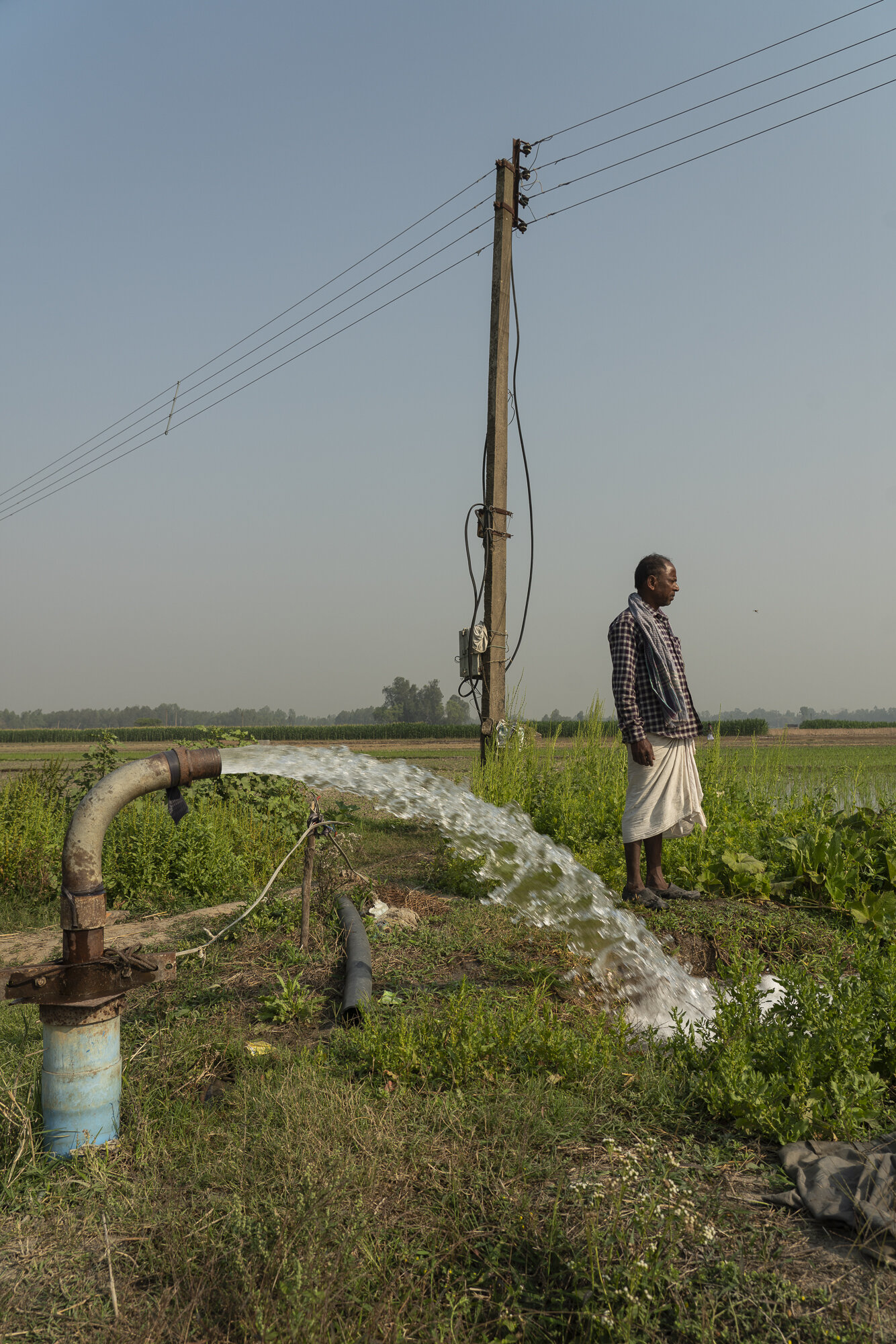The impact of electricity reforms on agriculture and groundwater in West Bengal, India
Recent research conducted by the International Water Management Institute (IWMI) has explored the food-energy-water nexus in the Indian state of West Bengal. Over the past two decades, the state has undertaken three important policy reforms related to groundwater and electricity. These were: (i) universal metering of electric-run agricultural tube wells starting in 2007; (ii) change in the groundwater law in 2011, which removed the requirement of farmers having to procure a prior permit from the groundwater department to get an electricity connection; and (iii) provision of a capital cost subsidy for the electrification of groundwater pumps in 2012. These three policy measures helped remove barriers to the electrification of agricultural wells and tube wells. This resulted in a more than threefold increase in the number of electric pumps – from 86,776 in 2007 to 303,018 by 2018. In this study, the impact of the increase in the number of electric pumps on agriculture- and groundwater-related outcomes was analysed using government (block level) data and community inputs.
It was expected that electrification of wells and tube wells would affect agricultural and groundwater outcomes through lowering the costs of irrigation. Per unit costs of pumping groundwater with electric pumps is much lower than pumping with diesel pumps. Therefore, it was expected that farmers with access to electric pumps would operate their pumps for longer hours and grow more water-intensive crops. However, despite the positive effect of the groundwater policy reform on the immediate outcome in terms of the number of pumps electrified, the effect on agricultural outcomes such as cropping pattern, cropping intensity, cropped area, production and yield was not evident. There was a positive effect of the policy on the summer (boro) paddy area and production, and a negative effect on the area under pulses. Yet, these effects were not robust and were found only in a limited number of blocks. It was found that groundwater policy changes led to slight improvements in groundwater levels in the period after 2011, as compared to the period before. The expectation was that groundwater levels would decline further, but given that cropping patterns and crop water use had not changed significantly in the post-2011 period, there was no overall acceleration in the pace of groundwater extraction either.
We are then faced with a puzzle, where the addition of over 216,000 new electric pumps seems to have had only a very limited effect on agricultural outcomes. Two possible explanations are offered. First, it is hypothesized that a substantial number of these so-called new ‘permanent’ electric pumps were already operating either as ‘temporary’ electric pumps or as diesel pumps. Similarly, there is anecdotal evidence from community level interactions that a number of erstwhile water buyers opted for electricity connections when entry barriers for electrification were lowered. Therefore, it seems that there may have been only a minimal number of new water users brought into the ambit of irrigated agriculture as a result of the groundwater policy change. The main impact may have been a reduction in the costs and increased reliability of irrigation, especially for former diesel pump owners and water buyers. Second, it is shown that farmers did not particularly benefit from the lower cost of irrigation due to the continuously rising electricity tariffs as well the costs of other components of production. This, coupled with the relative stagnation in boro paddy prices, squeezed farmers’ profit margins and discouraged them from expanding the area under water-intensive boro paddy. The lack of economic incentives for farmers possibly explains the absence of an extensive margin effect of the groundwater policy reform.
Given these findings, and in the context of a near certain agricultural downturn following the COVID-19 pandemic and Cyclone Amphan, we suggest that the Government of West Bengal reform its tariff structure in ways that encourage the intensive use of groundwater for irrigation. Community interactions also showed that farmers, especially in water-abundant villages, view boro paddy as a critical crop that enhances their incomes as well as food security. Boro paddy is also more labor intensive than other field crops. Given the immediate need for food security, and the need to absorb surplus labor in agriculture, the government should also encourage boro paddy cultivation. Due to COVID-19-related disruptions, many migrant youth have returned or will return to the villages in the near future. This will create a surplus labor pool in the villages. Reforming the paddy procurement system to enable small and marginal farmers to pool together their produce and sell to the government procurement camps will ensure they get a fair price for their produce. Overall, we recommend policies to improve profitability from agriculture, such as the lowering of electricity tariffs for irrigation. This could be achieved through the promotion of boro paddy in water abundant parts of the state, and diversification to less water-intensive crops in western parts of the state.
Read the full report here, and for more information contact Dr Aditi Mukherji ([email protected]).
